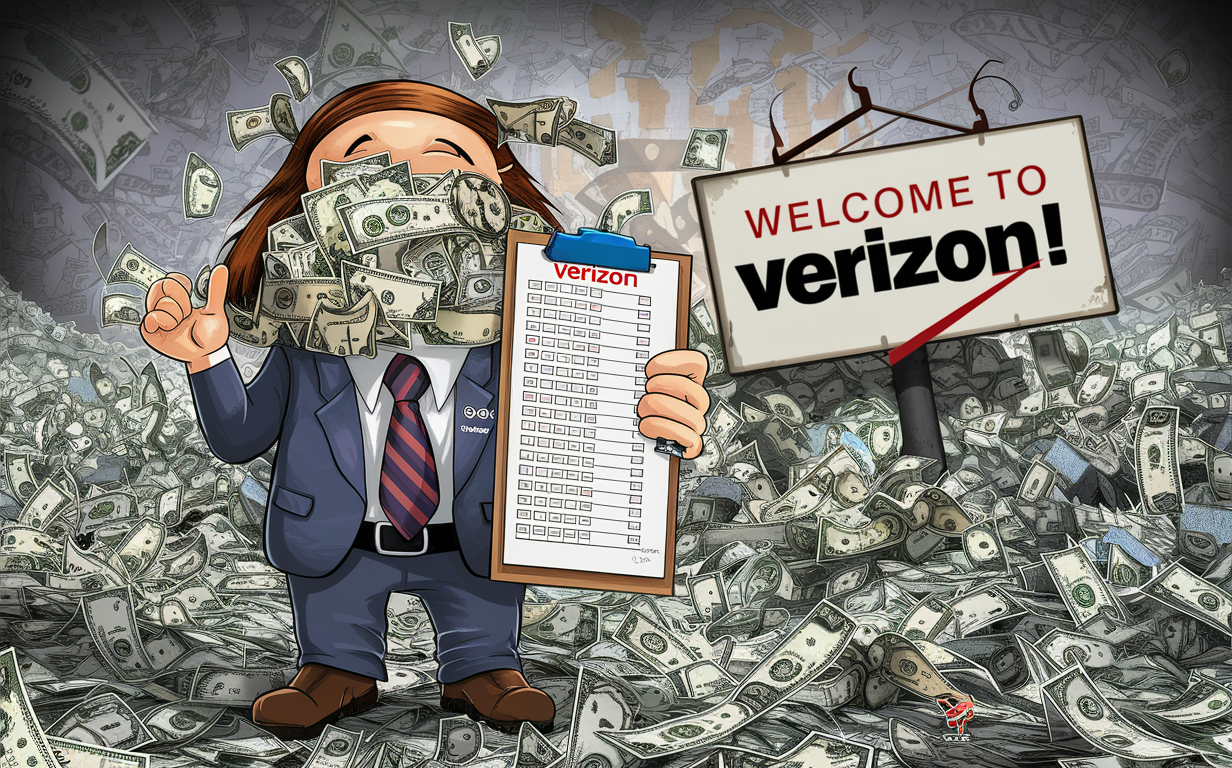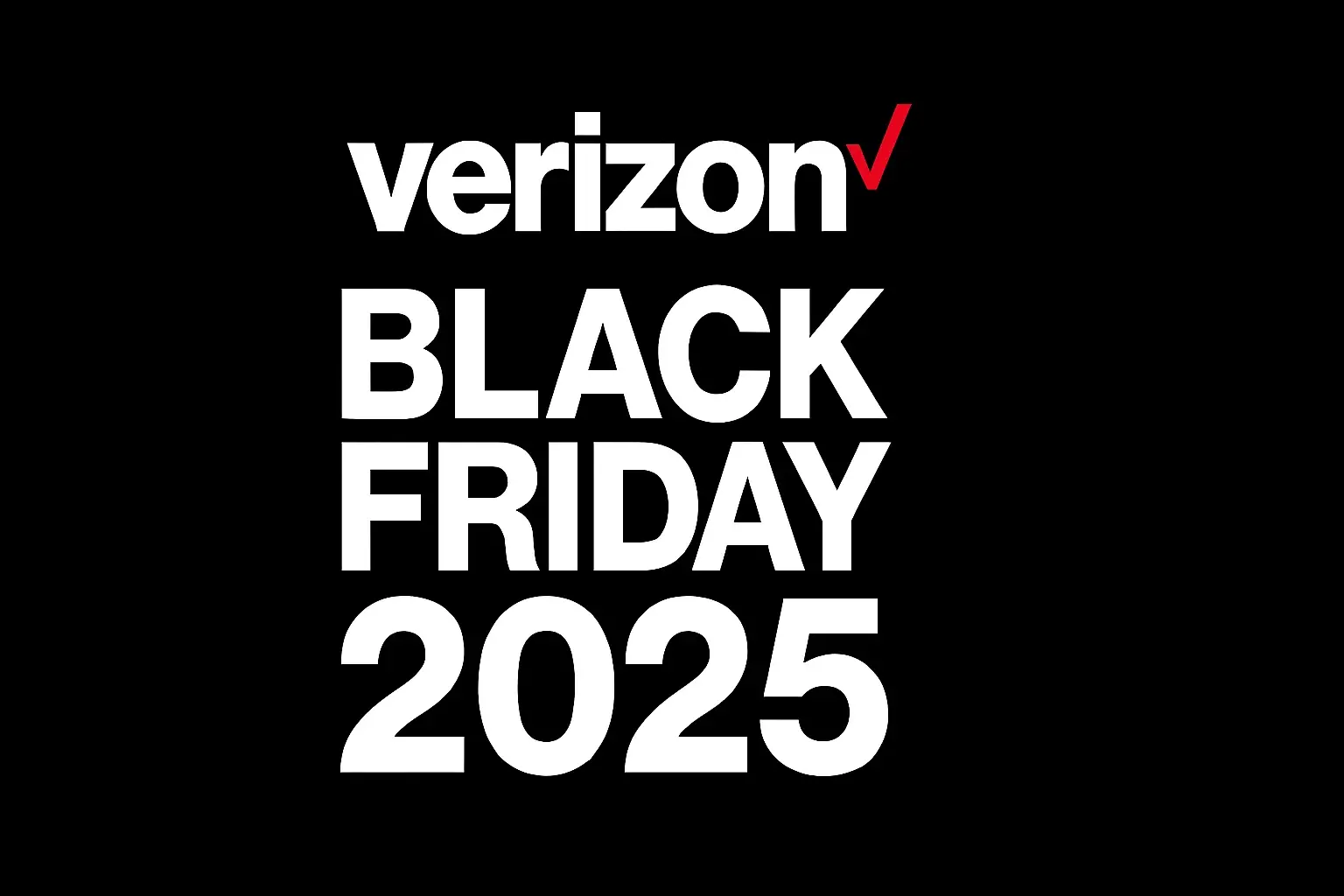Does Verizon have a lot of hidden fees?

Navigating Verizon's fee structure can feel complex. This in-depth guide demystifies potential hidden charges, offering clarity on what to expect and how to avoid unexpected costs, empowering you to make informed decisions about your mobile plan.
Understanding Verizon Fees: The Basics
When considering a mobile carrier like Verizon, the advertised monthly plan price is often just the starting point. Many users inquire, "Does Verizon have a lot of hidden fees?" The answer, like with most major telecommunication providers, is nuanced. While Verizon is generally transparent about its pricing, certain charges can appear on your bill that might not be immediately obvious when you sign up. These aren't always "hidden" in the sense of being deliberately concealed, but rather they are standard charges associated with service provision, activation, or specific plan features that some customers might overlook.
Understanding these potential costs is crucial for budgeting and avoiding bill shock. This guide aims to break down the common fees, explain their purpose, and provide actionable strategies for minimizing or eliminating them. We will delve into the specifics of what constitutes a "fee" versus a standard charge and how to ensure you're getting the best value without unexpected expenses. By the end of this comprehensive analysis, you'll be well-equipped to navigate Verizon's billing system with confidence.
Common Verizon Fees Explained
Verizon, like other large carriers, has a standard set of fees that can appear on customer bills. These are typically not designed to be secret but are often part of the operational costs of providing service. Understanding each one can prevent confusion and help you budget effectively.
Activation Fees
When you sign up for a new line of service with Verizon, whether it's a brand-new account or adding a line to an existing one, you'll likely encounter an activation fee. This fee covers the administrative costs associated with setting up your account, provisioning your service, and ensuring your devices are properly connected to the network. As of 2025, this fee typically ranges from $20 to $35 per line. While it's a one-time charge per line activated, it's important to factor this into your initial setup costs. Sometimes, promotions may waive this fee, especially during major sales events or for new customers signing up for specific unlimited plans.
Upgrade Fees / Line Access Fees
For existing customers upgrading to a new device or adding a new device to an existing line, a line access fee is standard. This fee is essentially the cost of using a specific line on your account for service. It's separate from the monthly payment for the device itself. For most unlimited plans in 2025, this fee can range from $20 to $45 per month, depending on the specific unlimited plan tier you are on. It's important to note that this fee is distinct from any monthly installment payments for a new phone. For example, if you have a phone on a payment plan, you'll pay the monthly device installment *plus* the line access fee for that line.
Late Payment Fees
If your bill payment is not received by the due date, Verizon will typically assess a late payment fee. The amount of this fee can vary based on your account balance and state regulations, but it's often a percentage of the overdue amount or a flat fee, typically around $5 to $10. Consistent late payments can also lead to service interruptions. It's always best to pay your bill on time or set up automatic payments to avoid these charges.
Overdraft Fees (if using autopay with insufficient funds)
If you have automatic payments set up and the bank account or card linked to your Verizon account does not have sufficient funds to cover the bill amount, your bank may charge you an overdraft fee, and Verizon might also attempt to process the payment again, potentially incurring another late fee if it fails. This isn't a direct Verizon fee but a consequence of failed automatic payments. Always ensure your linked payment method has adequate funds before the billing cycle closes.
International Roaming Fees
While Verizon offers international plans, using your phone outside of the U.S. without an appropriate plan or add-on can result in substantial charges. These "hidden" fees often arise from data usage, calls, and texts made while abroad. Verizon offers various international packages, such as the Verizon International Plans, which can significantly reduce these costs. For instance, simply using data in a country not covered by your plan can cost upwards of $20 per day per gigabyte, leading to very high bills quickly.
International Calling Fees
Similar to roaming, making calls to international numbers from the U.S. can incur per-minute charges if you don't have an international calling package. These rates vary greatly depending on the destination country. Verizon offers add-on packages for international long-distance calling that can make these calls more affordable.
Equipment Fees (if not on payment plan or purchased outright)
When you purchase a new phone, you have the option to pay for it upfront or finance it through Verizon's device payment plan. If you choose not to use a payment plan and are not bringing your own device, there might be an associated equipment fee or a requirement to purchase a compatible device. If you have an older device that is no longer compatible with Verizon's network standards (especially as 3G networks are phased out), you might be required to upgrade, which could incur costs if not managed carefully.
Taxes and Surcharges
This is perhaps the most commonly misunderstood part of a mobile bill. While not strictly "hidden fees," taxes and government-imposed surcharges can significantly increase your monthly bill beyond the advertised plan price. These vary by state and locality and can include federal universal service fund fees, regulatory program fees, and state/local taxes. Verizon is required by law to collect these, so they are unavoidable but are typically itemized on your bill. As of 2025, these can add anywhere from 10% to 30% or more to your base plan cost.
Add-on Service Fees
Verizon offers various add-on services, such as premium streaming subscriptions, enhanced security features, or cloud storage. If you opt into these, their monthly costs will be added to your bill. While not hidden, it's easy to forget you've subscribed to a service, especially if it was part of a promotional trial that converted to a paid subscription.
The "Hidden Fee" Myth or Reality?
The perception of "hidden fees" with Verizon often stems from a few key areas: lack of thorough reading of service agreements, misunderstanding of standard charges, and the cumulative effect of various taxes and surcharges. Let's break down whether these are truly hidden or simply overlooked.
Misinterpretation of Terms and Conditions
When signing up for a new plan or device, customers are presented with terms and conditions. While lengthy, these documents outline all potential charges, including activation fees, line access fees, and the conditions under which they apply. The "hidden" aspect often arises when customers don't fully read or understand these agreements, assuming the advertised price is all they will pay. In 2025, digital agreements are common, making it even easier to scroll past important details.
Standard Charges vs. Hidden Fees
Most fees associated with Verizon are standard industry practices. Activation fees, line access fees, and taxes are common across most mobile carriers. The term "hidden fee" is often used colloquially to describe charges that are not prominently displayed in the initial advertising of a plan. For instance, the monthly cost of a device payment plan is clearly stated, but the separate line access fee might be less emphasized. Similarly, international roaming charges can be astronomically high if a traveler doesn't proactively check rates or purchase an international plan.
The Impact of Unlimited Plans
Verizon's popular unlimited plans, while offering great features, often have complex fee structures. The base price advertised might be for a specific number of lines with certain discounts applied (like for autopay or paperless billing). If these conditions aren't met, the price increases. Furthermore, the line access fee for each line on an unlimited plan is a significant component of the monthly cost that can surprise new users who are accustomed to simpler, all-inclusive older plans.
Promotional Pitfalls
Promotions, such as "buy one, get one free" phone deals or discounted service for a limited time, can sometimes obscure the ongoing costs. While the initial savings are attractive, customers must understand the full price of the devices and the plan after the promotional period ends. Forgetting to cancel a trial subscription for an add-on service is another common way unexpected charges appear.
Taxes and Surcharges: The Unavoidable Increase
As mentioned, taxes and government-mandated surcharges are a significant contributor to the difference between the advertised plan price and the actual bill. These are legally required to be collected and are generally itemized on the bill. However, their cumulative effect can be substantial, leading some to perceive them as hidden charges. For example, a $60/month plan could easily become $75-$85 after all applicable taxes and fees in 2025, depending on location.
Real-World Examples (2025)
Consider a new customer signing up for Verizon's "Unlimited Plus" plan for two lines. The advertised price might be $130 for two lines. However, upon activation, they might see:
- Activation Fee: $35 per line = $70 (one-time)
- Line Access Fees: $45 per line x 2 lines = $90/month
- Taxes and Surcharges: Approximately 20% of base plan + line access fees = ~$46/month
So, while the advertised price is $130, the first month could be around $246 ($130 + $70 + $46), and subsequent months around $176 ($130 + $90 + $46). This significant difference highlights why understanding all components of the bill is crucial.
In conclusion, while Verizon doesn't typically employ deliberately deceptive "hidden fees," the complexity of its pricing structure, combined with standard charges and unavoidable taxes, can lead to a perception of hidden costs. Proactive understanding and careful review of bills are key.
Strategies to Avoid Verizon Fees
Avoiding unnecessary fees with Verizon is entirely achievable with a proactive approach and a clear understanding of their billing system. By implementing the following strategies, you can significantly reduce the likelihood of encountering unexpected charges on your monthly bill.
1. Read the Fine Print (and the Not-So-Fine Print)
This is the most fundamental step. Before signing any contract or agreeing to a new plan or device, take the time to read the terms and conditions. Pay close attention to sections detailing activation fees, line access fees, upgrade charges, and any promotional terms. Many online agreements allow you to download a PDF version, which can be easier to review.
2. Understand Your Plan's True Cost
The advertised price of a plan is rarely the final price. Always ask for a breakdown of the total monthly cost, including all taxes, surcharges, and mandatory fees. If you're on an unlimited plan, clarify the line access fee for each line and how it contributes to the total. For example, on Verizon's "Unlimited Ultimate" plan in 2025, the line access fee can be up to $45 per line, which is a substantial part of the bill.
3. Take Advantage of Promotions and Waivers
Verizon frequently offers promotions that waive activation fees or offer discounts on devices. Keep an eye on their website, especially during major shopping holidays. If you are eligible for a fee waiver, ensure it is clearly noted on your agreement and reflected on your first bill.
4. Opt for Autopay and Paperless Billing
Verizon often provides a discount (typically $10 per line per month) for customers who sign up for autopay and paperless billing. This not only saves you money but also helps you avoid late payment fees by ensuring your bill is paid on time automatically. Ensure your linked bank account or card has sufficient funds to avoid overdraft issues.
5. Manage Your Device Payments Wisely
When purchasing a new device, understand the total cost and the monthly installment plan. If possible, paying a larger down payment can reduce your monthly payments and the total interest paid over time, although Verizon's device payment plans are typically interest-free. If you're upgrading, be aware of any associated upgrade fees or changes to your line access fees.
6. Be Mindful of International Usage
This is where significant "hidden" costs can arise. Before traveling internationally:
- Check Rates: Visit Verizon's international section online to understand the daily rates or package costs for your destination.
- Purchase a Plan: If you anticipate significant usage, purchase an international plan (e.g., Verizon TravelPass or international data packages) before you leave. These plans often offer a set amount of data, talk, and text for a daily or monthly fee, which is far cheaper than pay-per-use.
- Disable Data Roaming: As a precaution, disable data roaming on your phone when you land if you haven't purchased a plan. You can then manually enable it if needed or connect to Wi-Fi.
7. Monitor Your Usage and Add-Ons
Regularly review your Verizon account online or via the My Verizon app. Check for any unexpected charges, subscriptions you don't recognize, or add-on services you're no longer using. Many services have free trial periods that convert to paid subscriptions if not canceled. Be vigilant about these.
8. Understand Taxes and Surcharges
While you can't avoid these, understanding them helps manage expectations. Know that your base plan price will always be increased by these mandatory charges. The percentage can vary significantly by state and local jurisdiction. You can often find a general estimate of these charges for your area on Verizon's website or by asking a representative.
9. Negotiate When Possible
If you're a long-time customer experiencing high bills or considering switching to a competitor, don't hesitate to contact Verizon's customer service. Sometimes, they are willing to offer loyalty discounts, promotional credits, or better plan options to retain your business. This is particularly true if you can present a competitive offer from another carrier.
10. Bring Your Own Device (BYOD)
If you already have a compatible phone, consider the BYOD option. This can save you the cost of a new device and potentially avoid some device-specific fees, though you will still be subject to line access fees and plan costs.
By actively employing these strategies, you can transform your perception of Verizon's fees from "hidden" to "understood and managed."
Verizon vs. Competitors: A Fee Comparison (2025)
When evaluating mobile carriers, understanding their fee structures is crucial for making an informed decision. Verizon is often perceived as a premium provider, which can sometimes translate to higher overall costs, including fees. Let's compare Verizon's typical fees with those of major competitors like AT&T and T-Mobile as of early 2025.
Activation Fees
Verizon: Typically $20-$35 per line. Can sometimes be waived with promotions.
AT&T: Similar to Verizon, often $30-$45 per line. Promotions are also common.
T-Mobile: Generally lower, often $0-$20 per line, especially for their Magenta plans. They have historically been more aggressive in waiving these fees.
Line Access Fees
This is a significant differentiator. Line access fees are charged for each line on your account, separate from the device payment. These fees are often higher on Verizon's premium unlimited plans.
Verizon: Can range from $20 to $45 per line per month, depending on the unlimited plan tier (e.g., Unlimited Plus, Unlimited Ultimate). For multiple lines, this adds up considerably.
AT&T: Varies by plan, but generally comparable to Verizon, often in the $20-$40 range for unlimited plans.
T-Mobile: T-Mobile's strategy has been to simplify pricing by including line access fees in their advertised "all-in" pricing for their Magenta plans. While there might be separate device installment costs, the core line access is often bundled, making their advertised price closer to the final cost for the service itself.
Upgrade Fees
Verizon: May apply an upgrade fee or have changes in line access fees when upgrading devices, especially on older plans.
AT&T: Similar to Verizon, upgrade processes can sometimes involve fee adjustments.
T-Mobile: Often has fewer explicit "upgrade fees," focusing more on the device installment plan costs. Their simplified model aims to avoid these smaller, separate charges.
Late Payment Fees
All three carriers charge late payment fees, typically a flat amount or a percentage of the overdue balance. These are generally comparable across the board, often in the $5-$10 range.
International Roaming
This is where Verizon's premium positioning can be most apparent.
Verizon: Offers TravelPass (daily rate for unlimited talk/text/data in many countries, around $10/day domestically, $15/day internationally) and specific international plans. Pay-per-use rates outside of plans are very high.
AT&T: Similar international plans and daily passes, often in a comparable price range to Verizon.
T-Mobile: Historically known for including some international roaming benefits (like free 2G data and unlimited texting) in their base unlimited plans, which can be a significant cost saver for occasional international travelers. Their higher-tier plans offer faster international data speeds.
Taxes and Surcharges
All carriers are subject to federal, state, and local taxes and surcharges. The actual amount varies significantly by location and is not a differentiator between carriers. However, because Verizon's base plan prices can be higher, the absolute dollar amount of taxes and surcharges might also be higher, even if the percentage is similar.
Promotional Offerings
Verizon: Often offers significant device trade-in credits and deals on new phones, but these are usually tied to specific unlimited plans and require keeping the line active for a set period.
AT&T: Similar to Verizon, with substantial trade-in offers and discounts tied to plan commitments.
T-Mobile: Known for aggressive promotions, including "phone on us" deals and more flexible upgrade options. Their "Un-carrier" approach often involves fewer restrictions and more transparent deal structures.
Summary Table (Estimated 2025)
| Fee Type | Verizon | AT&T | T-Mobile |
|---|---|---|---|
| Activation Fee (per line) | $20-$35 (often waived) | $30-$45 (often waived) | $0-$20 (frequently waived) |
| Line Access Fee (per line/month) | $20-$45 (higher on premium unlimited) | $20-$40 (varies by plan) | Often included in advertised price (Magenta plans) |
| International Roaming (basic) | Paid plans/passes ($10-$15/day) | Paid plans/passes (similar to Verizon) | Some included (2G data, unlimited text) |
| Taxes & Surcharges | Standard (adds 10-30%+) | Standard (adds 10-30%+) | Standard (adds 10-30%+) |
Conclusion of Comparison: T-Mobile often presents a more transparent and potentially lower-cost option regarding base fees and bundled services, especially for users who value simplicity and included international benefits. Verizon and AT&T are more comparable, with Verizon sometimes having slightly higher line access fees on its top-tier unlimited plans. However, Verizon's network coverage and reliability are often cited as superior, which can justify the higher cost for some users. The perception of "hidden fees" is often strongest with Verizon due to the cumulative effect of its standard charges on its premium-priced plans.
Mastering Your Verizon Bill: A Step-by-Step Guide
Understanding your Verizon bill is the most effective way to identify and prevent unexpected charges. Verizon provides detailed billing information, but it can be complex. Follow this step-by-step guide to decipher your statement and ensure accuracy.
Step 1: Access Your Bill
You can access your bill through several methods:
- My Verizon App: Download the app on your smartphone or tablet. It provides a user-friendly interface to view current and past bills.
- Verizon Website: Log in to your account on Verizon.com. Navigate to the "Billing & Payments" section.
- Paper Bill: If you opt for paperless billing, you'll receive email notifications when your bill is ready. If you receive a paper bill, it will be mailed to your address.
Step 2: Review the Summary Page
The first page of your bill is typically a summary. It will show:
- Total Amount Due: The final amount you need to pay.
- Due Date: The deadline for payment to avoid late fees.
- Payment Received: If you've already paid, this will reflect the payment.
- Account Balance: Your current outstanding balance.
- Plan Name: The name of your current service plan.
Compare the total amount due to what you expected. If there's a significant difference, proceed to the detailed sections.
Step 3: Examine "Charges for Service" or "Monthly Access"
This section details the core costs of your service plan. Look for:
- Base Plan Charges: The cost of your primary unlimited or shared data plan.
- Line Access Fees: The charge for each individual line on your account. Ensure these match the expected fees for your plan tier (e.g., $45/line for Unlimited Ultimate).
- Device Payment Installments: If you have purchased a phone on a payment plan, the monthly installment cost for each device will be listed here. Verify that the device name and amount are correct.
- Promotional Credits: If you have active promotions (e.g., device trade-in credits, bill credits), they should appear here as deductions. Ensure these credits are being applied correctly and for the full duration of the promotion. For example, a $800 phone credit spread over 36 months should appear as ~$22.22 each month.
Step 4: Investigate "One-Time Charges & Credits"
This section is crucial for identifying unexpected fees or verifying one-time charges.
- Activation Fees: If you recently added a line or started a new account, check if activation fees are listed and if any promotional waivers were applied.
- Upgrade Fees: Similar to activation fees, check for any upgrade-related charges.
- Equipment Purchases: Any outright purchases of accessories or equipment will be listed here.
- Credits: Any one-time credits applied to your account (e.g., for service issues) will also appear here.
Step 5: Review "Usage Charges" (if applicable)
While most unlimited plans include unlimited talk, text, and data within the U.S., this section is important for:
- International Calls/Texts: Charges for calls or texts made to international numbers from the U.S. if you don't have an international calling plan.
- International Roaming: Charges incurred if you used your phone abroad without an active international plan. This is a common area for high, unexpected charges.
- Premium SMS: Charges for services like voting via text or subscribing to certain alerts.
Step 6: Understand "Taxes & Government Fees"
This section breaks down the various federal, state, and local taxes and surcharges. While you can't avoid them, understanding the components can help you see where the extra costs are coming from. You'll typically see:
- Federal Universal Service Fund (USF)
- Regulatory Program Fees
- State and Local Sales Taxes
- Other state-specific surcharges
The total here can significantly increase your bill. For example, a $100 plan might have $20-$30 in taxes and fees.
Step 7: Check "Other Charges & Credits"
This catch-all category might include things like:
- Add-on Services: Subscriptions to services like Apple Music, Netflix, or Verizon's own security/cloud services.
- Late Fees: If your payment was late.
- Returned Payment Fees: If a payment was returned by your bank.
Step 8: Compare and Verify
Cross-reference the charges on your bill with your expectations and any agreements you have. If you see a charge you don't recognize or believe is incorrect:
- Consult Your Plan Details: Refer back to the information you received when you signed up.
- Check Promotions: Ensure all promised discounts and credits are applied correctly.
- Use the My Verizon App/Website: These tools often provide real-time usage data and can help explain specific charges.
Step 9: Contact Customer Service if Necessary
If you've reviewed your bill and still have questions or believe there's an error, contact Verizon customer service. Be prepared with your account information and specific questions about the charges you don't understand. Having your bill in front of you will be very helpful.
By consistently following these steps, you can gain complete control over your Verizon billing and effectively manage all associated fees.
Verizon Customer Service and Fee Resolution
Encountering unexpected fees or discrepancies on your Verizon bill can be frustrating. Fortunately, Verizon's customer service channels are designed to help resolve these issues. Understanding how to effectively engage with their support can lead to a swift and satisfactory resolution.
Channels for Support
Verizon offers multiple avenues for customer support:
- Phone Support: The most direct method. You can call Verizon's customer service line (typically 1-800-922-0204 for general inquiries or 1-866-266-8771 for wireless support) from a Verizon phone or any other line. Be prepared for potential wait times.
- Online Chat: Available through the Verizon website and My Verizon app. This is a convenient option for less complex issues or if you prefer written communication.
- Verizon Stores: For in-person assistance, you can visit a local Verizon store. This is ideal for discussing device issues or complex billing matters face-to-face.
- Social Media: Verizon actively monitors its social media channels (e.g., Twitter, Facebook). While not for highly sensitive account information, they can often direct you to the right resources or escalate urgent issues.
Preparing for Your Support Interaction
To ensure a productive conversation, gather the following information before contacting customer service:
- Account Number and PIN/Password: Essential for verifying your identity.
- Your Bill: Have your current and any relevant past bills readily available, specifically noting the charge(s) in question.
- Specific Dates and Details: If the fee relates to a specific event (e.g., activation, international travel, service change), have the date and any relevant details handy.
- Notes on Previous Interactions: If you've already discussed the issue, note down dates, representative names, and any reference numbers.
- Desired Resolution: Know what you want to achieve – a refund, a credit, an explanation, or a correction.
Tips for Effective Fee Resolution
- Be Polite and Calm: Customer service representatives are more likely to help a calm and respectful customer.
- Clearly State the Issue: Explain precisely which fee you are questioning and why you believe it is incorrect or unexpected. Refer to specific line items on your bill.
- Reference Your Plan and Agreements: If you believe the fee contradicts your service agreement or a promotion, mention it. For example, "My plan includes unlimited data, but I'm being charged for data usage" or "The activation fee was supposed to be waived as part of the promotion I signed up for."
- Ask for Escalation if Necessary: If the representative cannot resolve your issue, politely ask to speak with a supervisor or a specialist in the billing department.
- Document Everything: Keep records of all interactions – dates, times, representative names, reference numbers, and the outcome of the conversation. This is crucial if further action is needed.
- Understand Verizon's Policies: While you want to dispute incorrect fees, be aware of standard charges like taxes and government surcharges, which are generally non-negotiable.
- Leverage Loyalty: If you are a long-standing Verizon customer, mention your loyalty. Sometimes, carriers offer goodwill credits to retain valuable customers.
- Be Persistent but Reasonable: If you believe a fee is genuinely erroneous, don't give up. However, understand that not every fee can be waived, especially standard ones like taxes.
Common Fee Resolutions
- Activation/Upgrade Fees: Often waived if they were part of a promotion or if you are a loyal customer.
- International Roaming Charges: While difficult to waive entirely if usage occurred, customer service might offer a partial credit, especially if there was a misunderstanding about plan activation or coverage. Proving you took steps to disable data roaming can help.
- Billing Errors: If the error is clearly on Verizon's part (e.g., incorrect plan charge, unapplied credit), they are usually quick to correct it with a bill adjustment.
- Promotional Credit Issues: If promised credits are missing, customer service can usually apply them retroactively.
By approaching Verizon customer service with preparation and a clear strategy, you can effectively navigate fee disputes and ensure your billing accurately reflects your service agreement.
Conclusion: Informed Decisions with Verizon
The question "Does Verizon have a lot of hidden fees?" doesn't have a simple yes or no answer. While Verizon is generally transparent about its charges, the complexity of its pricing, the nature of standard fees like line access and taxes, and the potential for high international roaming costs can create the *perception* of hidden fees. By understanding the common charges, proactively managing your account, and utilizing customer service effectively, you can demystify your Verizon bill and avoid unexpected expenses.
Key takeaways emphasize the importance of reading the fine print, understanding the true cost beyond advertised prices, and being vigilant about international usage. Strategies like autopay, paperless billing, and utilizing promotional offers can significantly reduce your overall costs. Comparing Verizon's fee structure to competitors like T-Mobile highlights that while Verizon may have higher line access fees on premium plans, its network reliability can be a justifying factor for some. Ultimately, mastering your bill through careful review and knowing how to engage with customer service are your most powerful tools.
Making informed decisions with Verizon means being an educated consumer. By applying the knowledge gained from this guide, you can confidently manage your Verizon service, ensuring you receive the value you expect without the unwelcome surprise of excessive or misunderstood fees.





